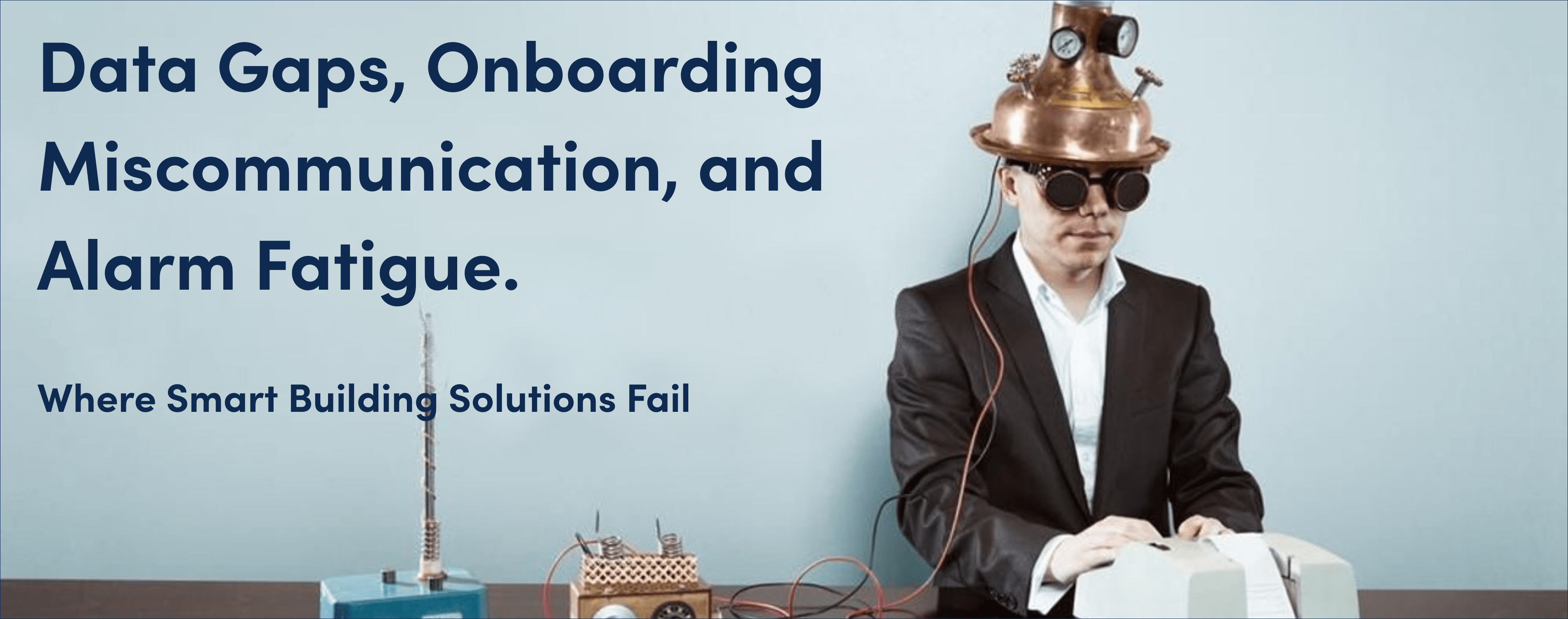Software solutions exist for every type of building component – from the simple conference room booking display to the most complicated mechanical systems. The goal of most commercial real estate owners is streamlining interaction with the built environment. Technology makes our lives more productive and decreases daily friction, and we personally see it further infiltrating every aspect of the building ecosystem in the coming years.
And yet. Smart buildings are not frictionless.
Smart building solutions often fail to gain traction, most commonly in the implementation and roll-out phases. Both occupants and facility management professionals can thwart the use of a smart building software, often not through malintent, but through lack of access or training. In the case of tenants or occupants, they fail to process changes to their daily routine. In the case of facility teams, they fail to adopt a software that was intended to make daily facility maintenance easier.
The most common causes of a smart building solution’s failure are gaps in data, misunderstandings during the onboarding process, or post-onboarding data overload.
When we talk about data gaps we mean: outdated building systems, data that is disconnected from the larger system or improperly configured, or overloaded systems that cannot handle the additional processing power that a smart solution overlay requires. For example, the Department of Energy finds that improperly configured Building Management Systems can result in 20% energy waste alone. In this situation, a smart building solution like BMS Analytics or Energy Analytics platform will not work properly until the BMS is reconfigured, or equipment is retrofitted to effectively serve a building.
Misunderstanding the onboarding process. Failures here occur when expectations are not met, roll-out takes too long, roll-out is too complicated on the engineering side, or the user is plain wary of what is supposed to be a tool to improve their daily lives. In the latter scenario, software platforms designed to help facility teams often end up become more homework for them. Onboarding and roll-out of new software requires enough training and support to make the teams and individual users feel confident but not burdened by this new approach. User wariness, uncertainty, or plain inability to use something is easily overcome by listening to needs and meeting them where they are.
In the case of more complex software or tools designed to help facility teams and building operators out, post-onboarding data overload often results in abandonment of the solution. In the case of security systems or BMS Analytics designed to alert a team of potentials issues before they become true issues, bad and unhelpful visuals are often at fault. Further, if the dashboard or platform used provides no analysis or points at symptoms, not causes, facility teams can do nothing but waste their time investigating everything that could be wrong. This causes alarm fatigue and taxes already overloaded teams. If you have one hundred alarms a day, then the word “alarm” is a misnomer.












